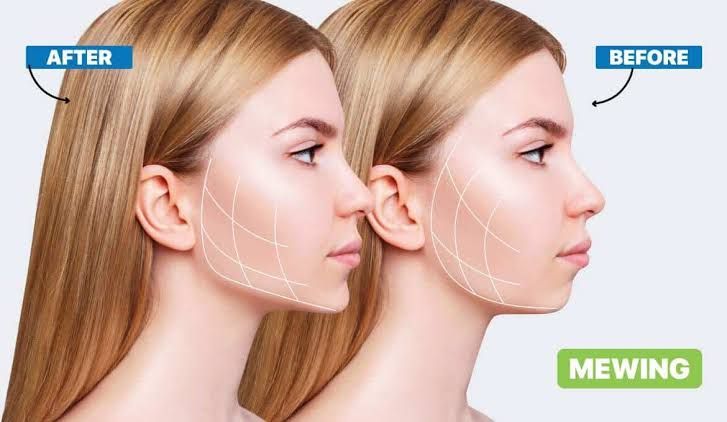What is Mewing and How to Do It
What is Mewing and How to Do It
Mewing is a technique that involves proper tongue posture to potentially improve facial structure and alignment over time. This method, named after Dr. John Mew, an orthodontist who promoted the technique, has gained popularity for its non-invasive approach to facial development and overall oral health. Here’s a detailed guide on what mewing is and how to do it correctly.
What is Mewing?
Mewing is the practice of resting your tongue against the roof of your mouth consistently. The concept is based on the idea that maintaining this posture can influence the shape of your jaw and face, potentially leading to a more defined jawline, improved dental alignment, and better breathing patterns. Proponents of mewing suggest that it can help in preventing or even correcting issues like a receding chin, crooked teeth, and other dental or facial irregularities.

How To do Meditation At Home: Step-By-Step Guide
The Science Behind What is Mewing
Dr. John Mew and his son Dr. Mike Mew advocate that proper tongue posture can positively affect the growth and development of facial bones. The theory is that when the tongue is placed correctly, it exerts gentle, consistent pressure on the maxilla (the upper jaw), encouraging it to move upwards and forwards. This, in turn, can lead to improved facial aesthetics and functionality.
Benefits of Mewing
- Improved Jawline: Consistent tongue posture can potentially enhance the definition of your jawline.
- Better Dental Alignment: Mewing may help in aligning teeth properly by influencing jaw growth.
- Enhanced Breathing: Proper tongue posture can lead to better nasal breathing and reduce mouth breathing.
- Posture Improvement: Maintaining correct tongue posture can contribute to overall better head and neck posture.
How to Do Mewing Correctly
Step 1: Correct Tongue Placement
- Rest the entire tongue against the roof of your mouth. This includes the back, middle, and tip of your tongue.
- The tongue should be gently but firmly pressed against the palate without touching the teeth.

Step 2: Mouth Position
- Keep your teeth lightly touching or very close together, without clenching.
- Maintain a closed mouth with lips together but relaxed.
Step 3: Breathing
- Breathe through your nose. Mewing promotes nasal breathing, which is beneficial for overall health and respiratory function.
Step 4: Consistency
- Practice mewing throughout the day. It’s important to make this tongue posture a habit for it to be effective.
- Remember that mewing is not a quick fix. It requires consistency and patience to see potential results.
Tips for Effective Mewing
- Practice Regularly: The more consistent you are with mewing, the better the potential results.
- Stay Patient: Changes, if any, will occur gradually over months or even years.
- Maintain Good Oral Hygiene: Proper dental care is crucial while practicing mewing.
- Monitor Your Progress: Take regular photos to track any changes in your facial structure over time.
Exploring the Benefits and Techniques of Chair Pose (Utkatasan): A Comprehensiv
Common Mistakes to Avoid
- Incorrect Tongue Placement: Ensure your entire tongue is against the roof of your mouth, not just the tip. What is Mewing
- Mouth Breathing: Avoid breathing through your mouth as it counteracts the benefits of mewing. What is Mewing
- Inconsistent Practice: Sporadic practice won’t yield results. Aim for consistent daily practice. What is Mewing
How to Do Mewing: Key Steps and Tips
Understanding what mewing is and how to do it can lead to significant improvements in oral and facial health. By following the correct steps and maintaining consistency, you can practice mewing effectively and potentially see positive changes over time.

Step-by-Step Guide to Mewing
Step 1: Correct Tongue Placement
- Rest the entire tongue against the roof of your mouth. This includes the back, middle, and tip of your tongue.
- Make sure the tongue is gently but firmly pressed against the palate without touching the teeth.
Step 2: Proper Mouth Position
- Keep your teeth lightly touching or very close together without clenching. What is Mewing
- Maintain a closed mouth with your lips together but relaxed. What is Mewing
Step 3: Focus on Breathing
- Breathe through your nose. Mewing promotes nasal breathing, which is beneficial for overall health and respiratory function.
Step 4: Maintain Consistency
- Practice mewing throughout the day. It’s important to make this tongue posture a habit for it to be effective.
- Consistency is crucial. Changes, if any, will occur gradually over months or even years.
-
How To Do Meditation In Morning: A Step-by-Step Guide
Step 5: Incorporate Mewing into Daily Routine
- Ensure you maintain the tongue posture even when talking, swallowing, and during other daily activities.
Tips for Effective Mewing
- Regular Practice: The more consistent you are with mewing, the better the potential results.
- Patience: Changes, if any, will be gradual. Stay committed to the practice.
- Good Oral Hygiene: Maintain proper dental care while practicing mewing.
- Monitor Progress: Take regular photos to track any changes in your facial structure over time.
- Stay Hydrated: Drink plenty of water to avoid dry mouth, which can make maintaining the posture difficult.
-
How To Do Meditation For Concentration: A Step-by-Step Guide
Common Mistakes to Avoid
- Incorrect Tongue Placement: Ensure your entire tongue is against the roof of your mouth, not just the tip. What is Mewing
- Mouth Breathing: Avoid breathing through your mouth as it counteracts the benefits of mewing. What is Mewing
- Inconsistent Practice: Sporadic practice won’t yield results. Aim for consistent daily practice. What is Mewing














Post Comment